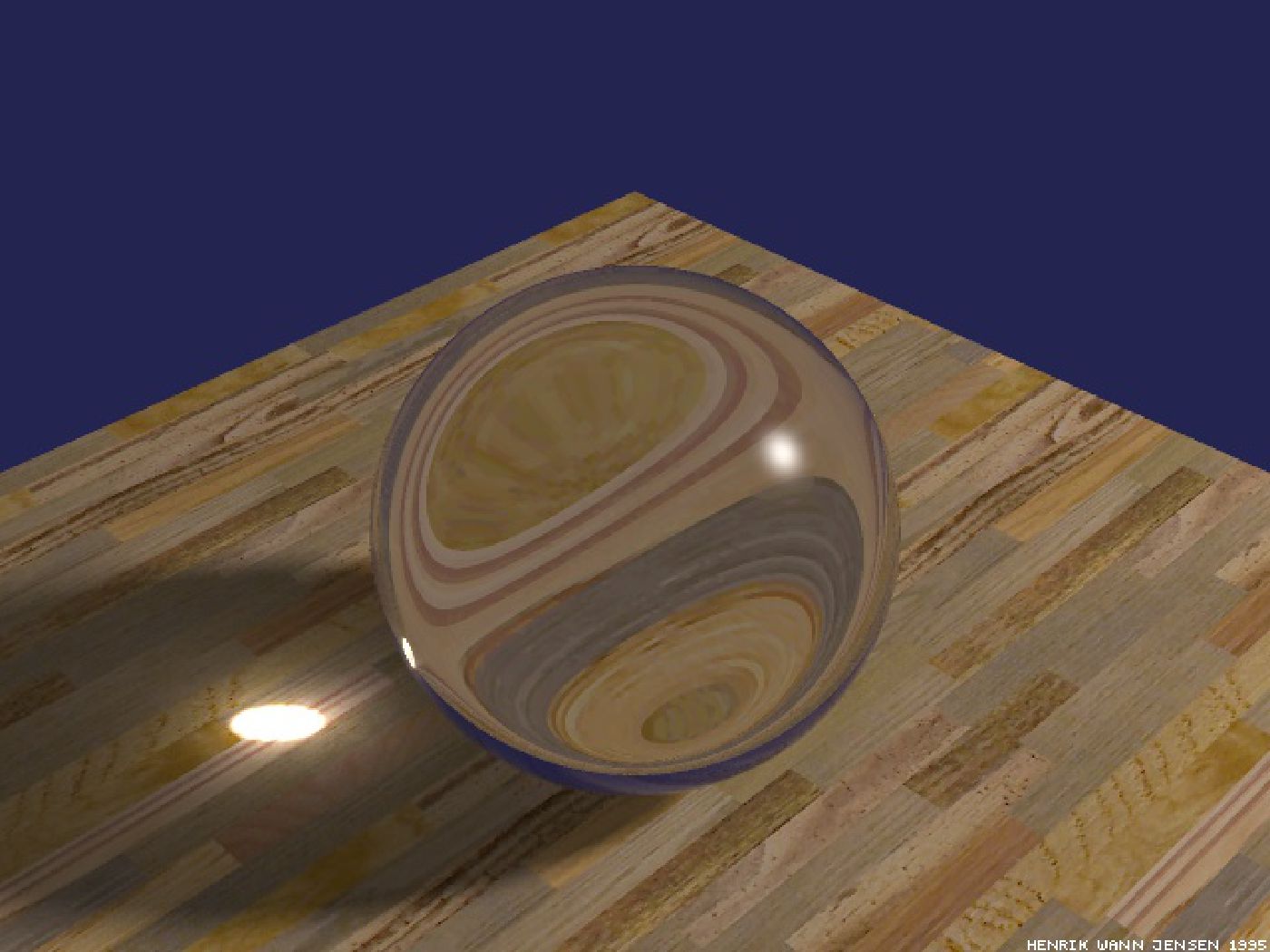
Gravitational lensing is the phenomena that occurs when a distant star or galaxy passes behind gravitational mass, resulting in light distortion such as a ring or a arch's. Einstein's explanation is that this is evidence for his relativity theory, that demonstrates space-time bending, however a far simpler explanation is to suggest that this is a simple fluid distortion. If fluid gravity exists then gravitational lensing provides a very real example of the fluid nature of gravity and is entirely consistency with the behaviour of light passing through a fluid that is distorted.
A real world example is optical fibre used extensively in a wide range of technology. Light will normally want to travel in a straight line, however fibre optical cable allows a light beam to follow any shaped pathway without breaking the beam of light. Liquid has long been known to distort and bend light, so to see light bending around stars or galaxies would provide a high degree of evidence for a luminiferous aether that conducts light waves through space and as it turns out is distorted by gravity fields.
While we can credit Einstein for getting the idea of gravitational lensing, we have to just point out that his methods don't work inline with the evidence. He suggested that powerful gravity forces from galaxies bend space time and light simply follows in a straight line along a bent path with the result of getting multiple images of the same thing. The problem with this idea is that the images become flipped and that couldn't happen based on his method. The single image needs to be split and flipped to produce the lens effects that we see.
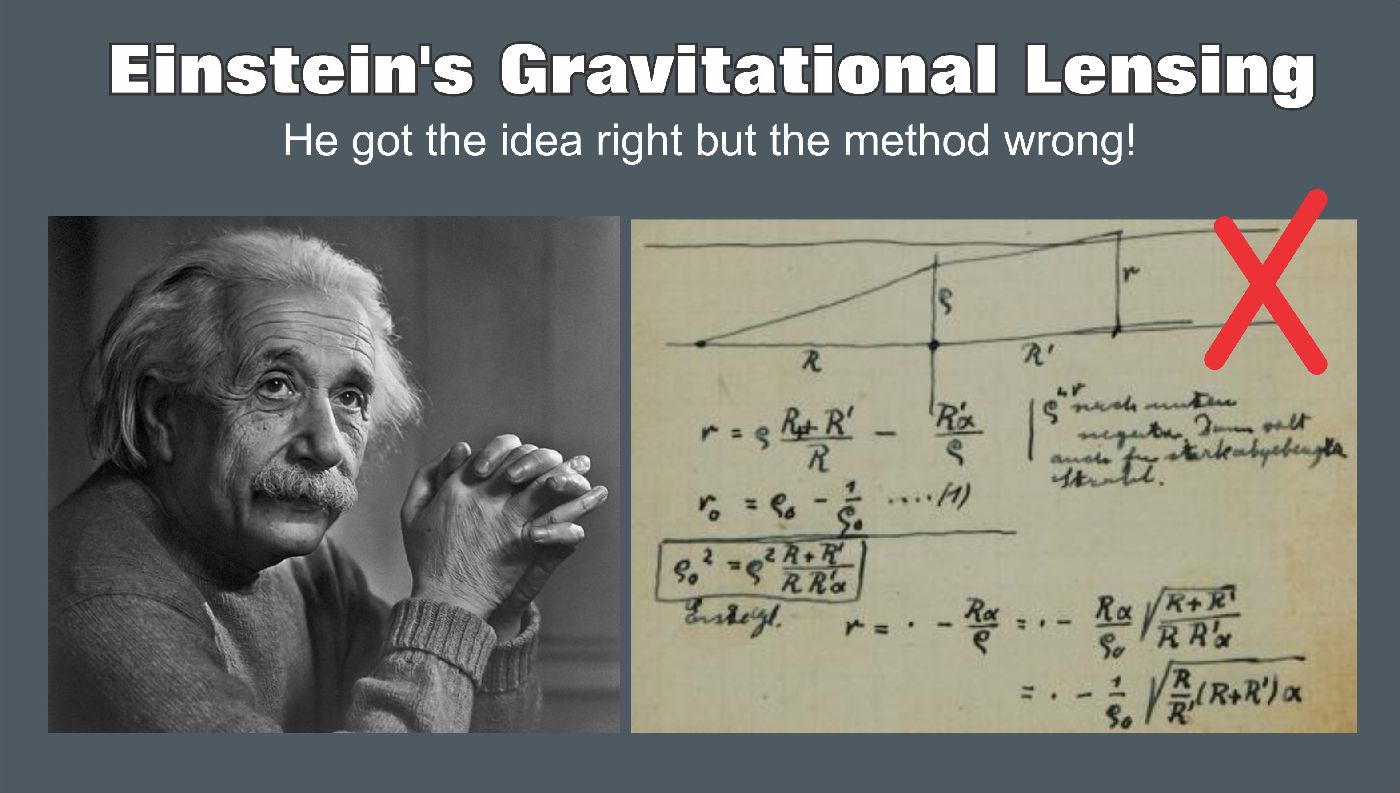
Einsteins Model doesn't work!
Most of the diagrams that you see of gravitational lensing don't provide enough detail to realise the problem that is hidden behind the science. I have replaced the images with an arrow pointed up to show the results of applying the different methods to each scenario. Based on Einstein's model we would see the new slit images showing both arrows remaining the same way up. This is because Einstein's method requires two sets of light transmitted in different directions to be converged back together through space time bending, These stereo images would now appear as parallel images in the same orientation which is not what the evidence shows..
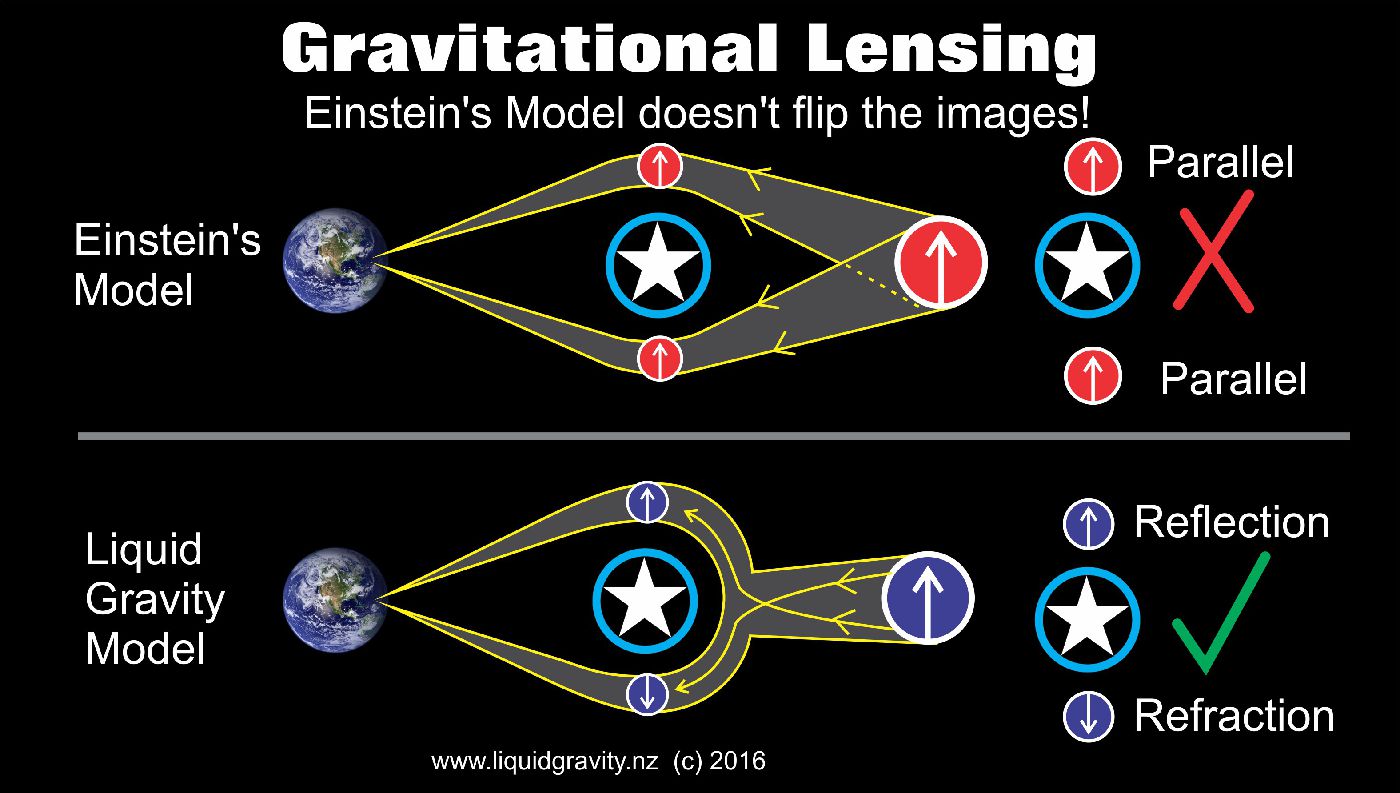
The Liquid Gravity Model Works
The liquid gravity model we see the Arrow pointing up in the source image and the visible image from earth would reveal a mirrored pair of images with one arrow down and the other in its original form. This image disproves Einstein’s fundamental idea that space-time bends light because the evidence suggest that gravity mirrors light which goes onto prove that light is passing through layers of increasingly dense liquid to produce this lensing affect.
This diagram shows a light source coming from the bottom edge of the gravitational lens relative to the viewer. It is more common to see gravitational lenses that contain edge slivers rather than full circle lens affect.
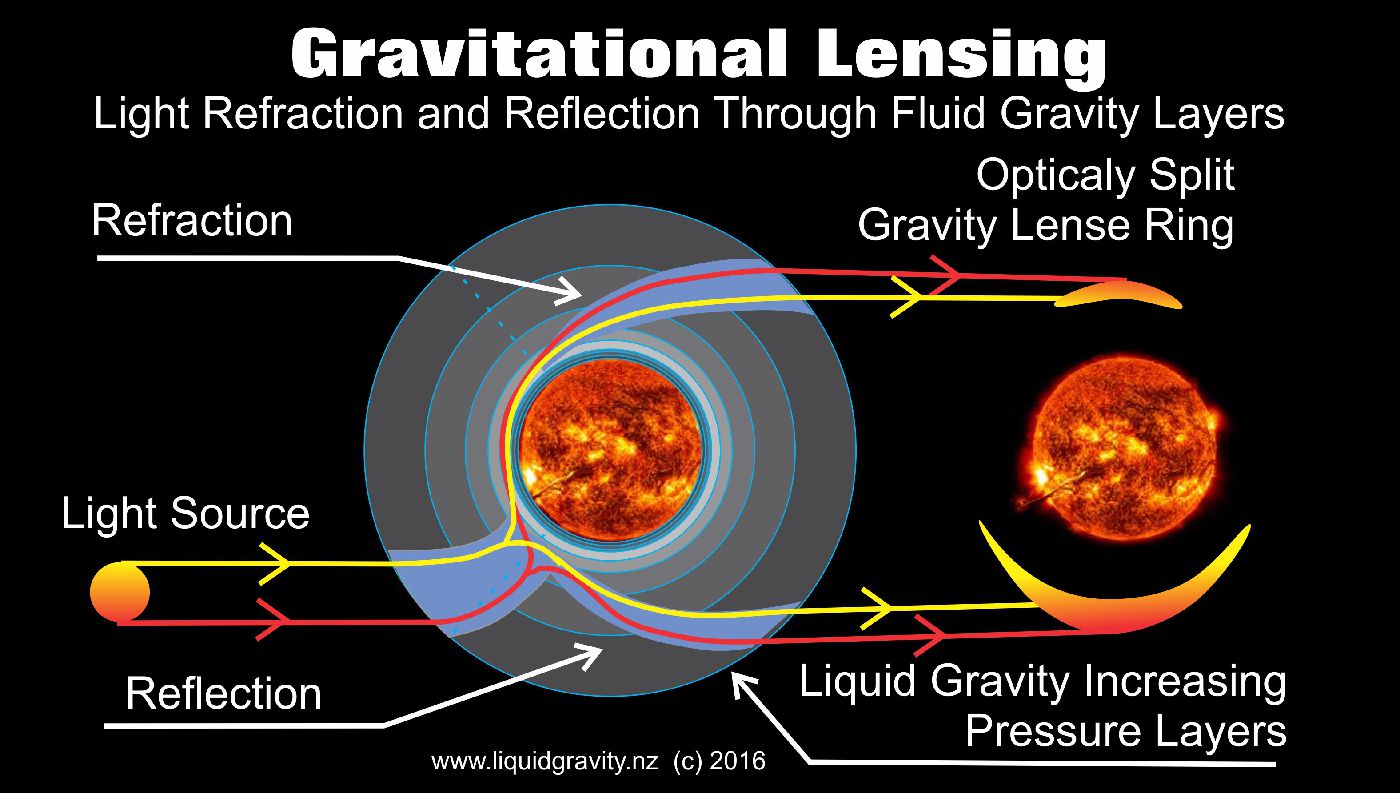
The layers of dense gravity refract and reflect light.
The liquid gravity model is based on light from a distant galaxy coming into contact with gravity layers that increase in density as thy get closer to the centre of their galaxy or star. These layers of increasing density refract the light in the same way that light would refract through water, by bending its path as the light slows down through each layer. And just as light will do through a critical angle where it will split into two to become a reflection and a refracted split beam. The result is two images that mirror each other, rather than being just double the same as would be the case for Einstein's theory. This normal lens behaviour can only happen through a liquid that is changing in density which is in line with Liquid Gravity.
A central lens position will have the result of spreading the light source around the lens object like a hallo. As the light hits the outer layers of the lens object it slows down with resistance of increasingly denser Liquid Gravity. This has the result of bending the light around the object and then pushing it away from the lens object and back through each decreasingly dense layer which progressively speeds up the light.. These principals of light bending through liquids are well established and understood optics, not mysterious Space-time bending mysteries.
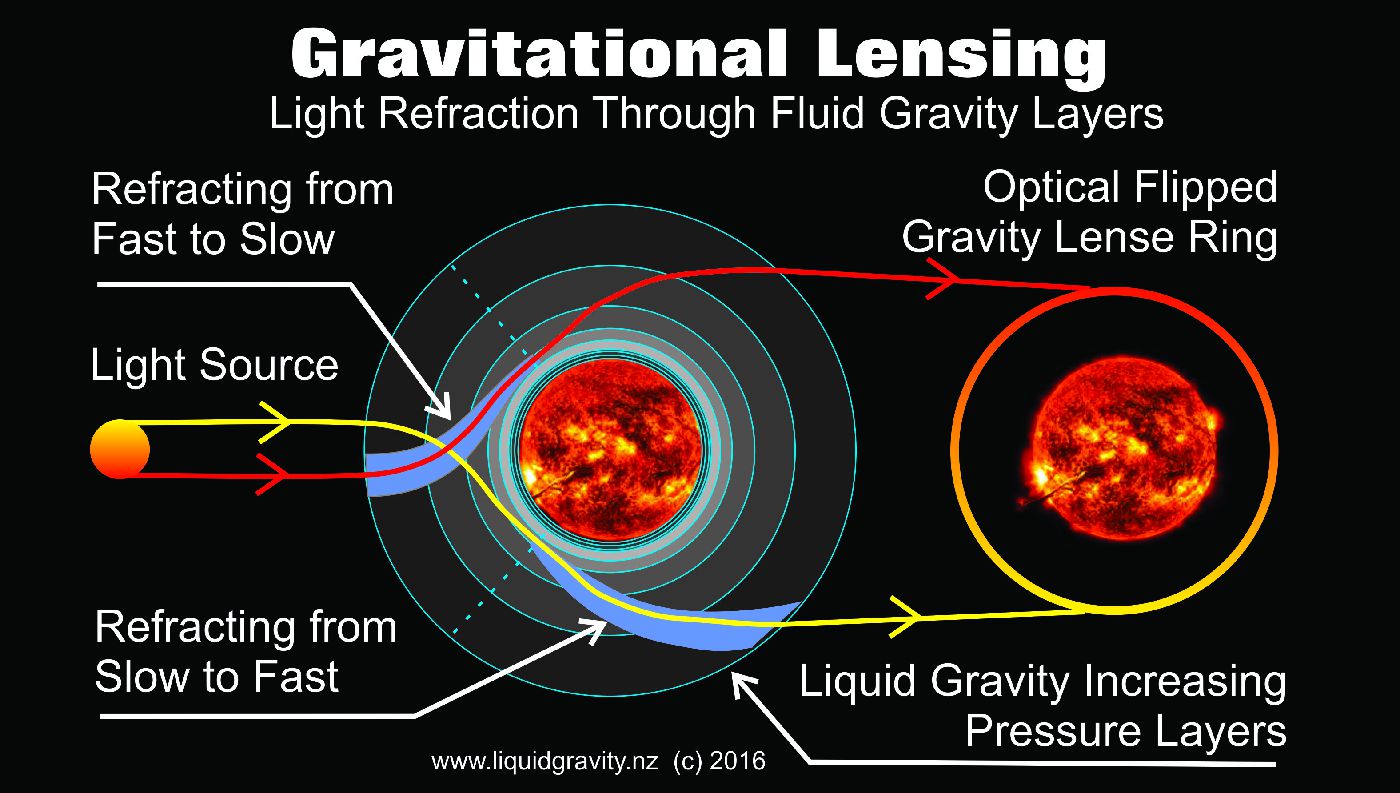
Liquid Gravity makes a simpler universe to understand
By understanding the mystery of gravitational lensing we can begin to unlock the secrets of Black holes and the way time and light behave through out the universe. It is less complicated and easier to grasp compared to the complex mysteries that Einstein and his notion of time and space bending that has created more new mysteries than it has solved....

SHARE THIS PAGE!